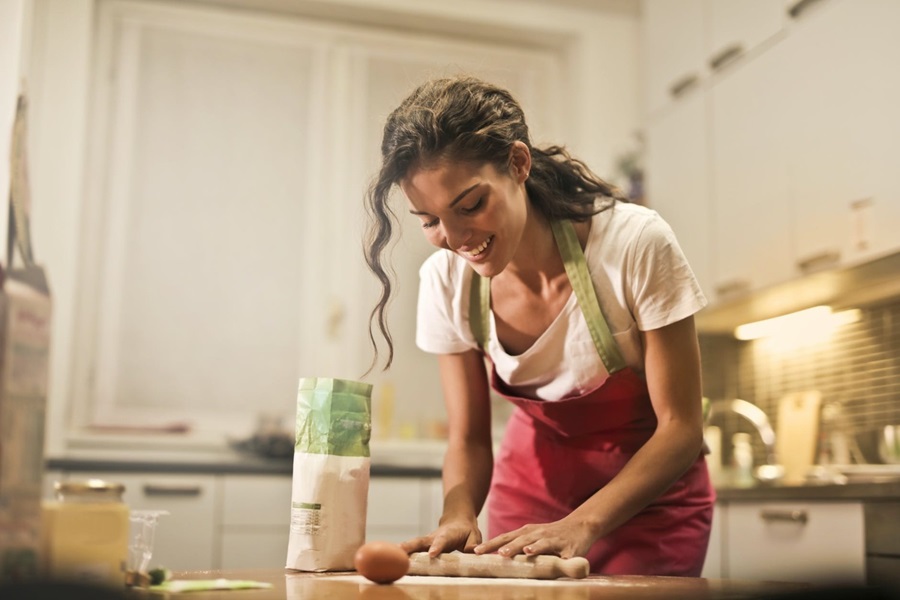The latest figures from Kantar show take home grocery sales in Ireland increased by 17.2% in the 12 weeks to 19 April as shoppers adjusted to life under lockdown. While grocery sales are strong, retailers will have felt the effects of social distancing restrictions on food on the go purchasing and other non-grocery categories.
It’s been a challenging few weeks and we’ve all been grateful for how hard the grocery retailers have been working to keep us fed and watered. In the absence of dinners with friends and lunch on the go, many more meals are being eaten in the home and grocery sales have risen accordingly. But social distancing means people are less likely to be buying categories like clothes, food on the go, and general merchandise – which means, for some retailers, the overall picture will be more modest.
In the most recent four weeks, year-on-year grocery growth slowed slightly from March levels to 22.5% and, as people followed Government advice to stay at home, the average household visited the grocers 19 times, two times fewer than the same period last year.
In an effort to get everything they need in one go and cater for all the additional meals and snacks eaten at home, shoppers are adding an extra four items to their baskets each visit, increasing their monthly grocery bill by €118 on average.
The change in shopper behaviour adds up to an extra €440 million spent on grocery in the past 12 weeks, but this additional spend is impacting individual retailers in different ways. Before lockdown, Dunnes customers already spent 80% more than the average shopper each visit at €43.80, which means the retailer has experienced less of a jump in spend per trip than those grocers starting from a lower base. Dunnes is growing slightly behind the rest of the market as a result, but these are extremely narrow margins and only 0.5 percentage points separates the three retailers at the top of the table.
Lidl was the fastest growing of all the retailers during the full 12-week period, boosting sales by 22.1% and increasing its market share to 12% while Aldi grew by 15.6% to hold an 11.8% share.
In the shorter term, SuperValu’s large store estate saw it benefit from shoppers choosing to visit outlets closer to home, and it was the only retailer not to experience reduced footfall during the past four weeks.
Demand for online grocery has soared as people try to limit their contact with others and 10% of Irish households received an online grocery delivery in the past four weeks compared with 6% last year. An additional €20.6 million was spent online this month and it’s heartening that the number of retired people getting groceries delivered has doubled in the past 12 weeks, indicating the take up of delivery slots among more vulnerable groups.
Consumers are looking for ways to pass the time during lockdown and people are turning to cooking from scratch as a good way to keep their families entertained at home. Sales of ready meals are in decline but 50% of Irish households bought baking supplies in the past four weeks, with flour up 52% and sugar up 43%. Those shoppers trying to recreate their favourite takeaway dishes have also boosted sales of ethnic ingredients by 41% and herbs and spices by 61%.
There are signs that people are trying not to let the lockdown dampen their spirits. While beer gardens and wine bars remain off limits, people have been turning to the grocers for their favourite tipples and boosted sales of alcohol by 70%, an additional €47 million. Wine sales increased by 50% year on year, while beer, lager and cider sales benefited from the warmer weather and were double the levels in the same four weeks in 2019.
Notes for editors
For all publicly-quoted data, users of our research (including media) must ensure that data is sourced to ‘Kantar’.
These findings are based on Worldpanel FMCG data for the 19 April 2020. Kantar monitors the household grocery purchasing habits of 5,000 demographically representative households in the Republic of Ireland. All data discussed in the above announcement is based on the value of items being bought by these consumers.
Kantar’s universe covers all take-home purchasing from the grocers, of which alcohol, ambient, fresh, frozen, healthcare, household, and toiletries make up the majority. These items typically account for around 85% of sales for the grocery retailers, with the other 15% made up of items like food on the go, fashion, and general merchandise. These smaller markets usually remain as a stable proportion of retailer sales, which means by monitoring the 85%, Kantar has an accurate read of overall retailer and market performance.
Unique lockdown circumstances have meant the majority of expenditure across the non-take home markets has decreased significantly or disappeared completely. This may have had an impact on sales for some retailers which is not reflected in our read of take home sales.
Retailer growth figures reported by Kantar relate to overall take home sales, and so include the impact of store openings or closures. Like-for-like sales change is not measured or reported. Calculating like-for-like sales requires a detailed knowledge of store openings and extensions which is information held accurately only by individual retailers.
Kantar will only support data that is published in the context we have presented it and our own interpretation of these findings. We cannot be held responsible for any other interpretation of these findings.

